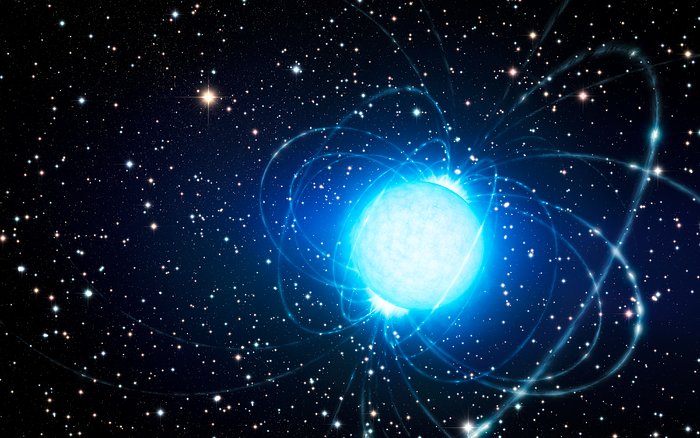An international team of astronomers has conducted simultaneous radio and X-ray observations of the magnetar 1E 1547.0–5408 during its period of enhanced activity. In result, new X-ray and radio bursts were detected from this source. The finding is reported in a paper published November 12 on arxiv.Org

Magnetars are neutron stars with extremely strong magnetic fields, more than quadrillion times stronger than the magnetic field of our planet. Decay of magnetic fields in magnetars powers the emission of high-energy electromagnetic radiation, for instance, in the form of X-rays or radio waves.
At a distance of about 14,670 light years from the Earth, 1E 1547.0– 5408 is a radio-emitting magnetar with a spin period of 2.07 seconds and a surface dipolar magnetic field of approximately 640 trillion G. Observations show that it has experienced at least three outbursts (the last one in 2009) during which several energetic short bursts were emitted.
Now, a team of astronomers led by Gianluca Israel of the Astronomical Observatory of Rome, Italy, present new results of observations carried out in 2009, when 1E 1547.0–5408 exhibited its latest bursting activity. The monitoring of this magnetar was conducted using the 64-m Parkes radio telescope, together with NASA’s Chandra and ESA’s XMM-Newton X-ray observatories.
“We performed two X-ray and three radio observations of 1E 1547.0–5408 during its 2009 burst active phase,” the astronomers wrote in the paper.
The observational campaign identified two bursts of 1E1547.0–5408. One had a fluence of about 0.6 kJy ms, width of approximately 200 ms, and occurred one second after a very bright X-ray burst. The X-ray event had a bolometric fluence of 0.0013 millierg/cm2 and width of some 50 ms.
The study found that the radio bursts of 1E 1547.0–5408 are neither aligned with the radio pulsations detected a few days before, nor with the X-ray pulsations observed from this source. It was added that no radio pulsations were detected during the new observations.
According to the researchers, the newly discovered bursts are reminiscent of the so-called fast radio bursts (FRBs) – intense bursts of radio emission lasting milliseconds and showcasing characteristic dispersion sweep of radio pulsars. However, more studies, focused on determining spectral properties of these radio bursts are needed to confirm their FRB nature.
Given that the physical nature of FRBs is yet unknown, the study conducted by Israel’s team could be important in improving our understanding of these mysterious phenomena.
“The picture emerging from our detection of radio and X-ray bursts from 1E 1547.0–5408, as well as from the most recently observed bright and faint radio and X-ray bursts from SGR J1935+2154, is that there exists a continuum of magnetar radio burst energies, which might at times look like FRBs and at others be much closer to typical radio pulsar single pulse phenomenology,” the authors of the paper concluded.
Sources:phys.org
